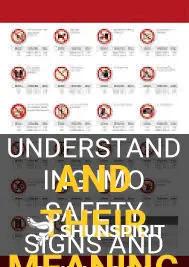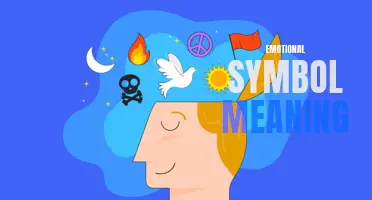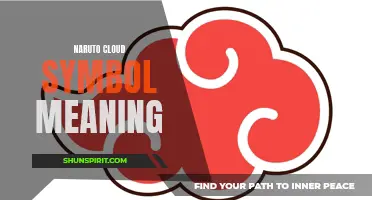
Safety signs and symbols play a crucial role in ensuring that individuals are aware of potential hazards and can navigate their surroundings safely. One commonly used and universally understood system is the International Maritime Organization (IMO) safety signs and symbols. These signs and symbols are specifically designed for maritime environments and provide clear and concise communication regarding safety procedures, emergency equipment, and potential hazards. Understanding these signs is essential for all those who work or travel on ships and other water vessels, as they can mean the difference between a safe voyage and a dangerous situation.
What You'll Learn
- What are the main types of IMO safety signs and symbols used in maritime environments?
- How are IMO safety signs and symbols standardized across different maritime industries and countries?
- What is the purpose of IMO safety signs and symbols How do they contribute to overall safety on board ships?
- Can you provide examples of common IMO safety signs and symbols and explain their meaning?
- How often are IMO safety signs and symbols updated or revised to reflect changes in regulations or industry best practices?

What are the main types of IMO safety signs and symbols used in maritime environments?
Safety signs and symbols play a crucial role in maintaining a safe maritime environment. The International Maritime Organization (IMO) has developed a standardized system of signs and symbols to ensure consistent and effective communication of safety information. These signs and symbols are used to indicate potential hazards, guide safe behavior, and provide essential information to mariners. Here are some of the main types of IMO safety signs and symbols commonly used in maritime environments:
- Prohibition Signs: These signs are used to indicate actions that are not allowed or prohibited. They typically feature a red circle with a diagonal line across a black pictogram or symbol. Common examples include "No smoking," "No entry," and "No naked flames."
- Warning Signs: Warning signs are used to alert mariners of potential hazards or dangers. They usually feature a yellow triangle with a black pictogram or symbol. Common examples include "Danger", "High voltage", and "Beware of falling objects."
- Mandatory Signs: Mandatory signs indicate actions that must be followed or mandatory safety requirements. They typically feature a blue circle with a white pictogram or symbol. Common examples include "Wear personal protective equipment (PPE)", "Use handrail", and "Wear a life jacket."
- Emergency Signs: Emergency signs provide information about emergency facilities and procedures. They usually feature a green square or rectangle with a white pictogram or text. Common examples include "Emergency exit", "Emergency shower", and "Emergency telephone."
- Fire Safety Signs: Fire safety signs are used to indicate fire protection equipment and facilities. They typically feature a red square or rectangle with a white pictogram or text. Common examples include "Fire extinguisher", "Fire alarm", and "Fire hose reel."
- Information Signs: Information signs provide essential information to mariners about various aspects of the vessel or port facilities. They usually feature a white square or rectangle with a black pictogram or text. Common examples include "Emergency evacuation plan", "First aid station", and "Fuel storage area."
- Directional Signs: Directional signs are used to provide guidance and direct mariners to specific locations or facilities. They typically feature a white rectangular sign with a blue or black arrow or text. Common examples include "Toilet", "Canteen", and "Crew accommodation."
- Hazardous Substance Signs: Hazardous substance signs are used to indicate the presence of hazardous materials or substances. They usually feature a white background with a black pictogram or text indicating the type of hazard. Common examples include "Flammable", "Toxic", and "Corrosive."
It is important for mariners to familiarize themselves with these signs and symbols to ensure their safety and the safety of others. By understanding and following these signs, mariners can contribute to the creation of a safe maritime environment and prevent accidents and injuries.
Understanding the Symbolic Meaning of the Succubus
You may want to see also

How are IMO safety signs and symbols standardized across different maritime industries and countries?
In the maritime industry, safety signs and symbols play a crucial role in communicating important information to crew members and passengers. These signs are standardized by the International Maritime Organization (IMO) to ensure consistency and understanding across different maritime industries and countries.
The IMO is a specialized agency of the United Nations that is responsible for the safety and security of international shipping. One of the ways they achieve this is through the standardization of safety signs and symbols. The IMO has developed a set of guidelines known as the International Code of Signals (ICS), which provides a standardized system of communication at sea. This code includes a comprehensive list of safety signs and symbols that are universally recognized and understood by mariners around the world.
The IMO's guidelines for safety signs and symbols cover a wide range of topics including emergency procedures, fire protection, personal protection, and navigation. These signs and symbols are designed to be easily distinguishable and comprehensible, even in high-stress situations or in poor visibility conditions. For example, emergency exit signs are typically green with a white symbol depicting a running figure, while fire equipment signs are red with a white symbol depicting a fire extinguisher or hose.
To further enhance understanding, the IMO has also developed a set of standard colors and shapes for safety signs and symbols. For example, red is often used to indicate danger or prohibition, while green is used to indicate safety or escape routes. Similarly, a circle with a diagonal line is used to indicate prohibition, while a triangle is used to indicate caution or a warning.
In addition to standardizing signs and symbols, the IMO also requires that these safety signs be prominently displayed in areas where they are likely to be seen and understood by crew members and passengers. This includes locations such as escape routes, lifeboat stations, and emergency exits. The signs must also have adequate illumination and be of the appropriate size and proportions to ensure visibility and readability.
While the IMO's guidelines for safety signs and symbols are universally recognized, individual countries and maritime industries may have additional requirements or variations. For example, certain countries may have specific regulations regarding the use of local language or terminology on safety signs. However, these variations are typically minimal and do not impact the overall effectiveness or understanding of the signs.
In conclusion, IMO safety signs and symbols are standardized across different maritime industries and countries to ensure consistent communication and understanding of important safety information. The IMO's guidelines and the International Code of Signals provide a comprehensive set of signs and symbols that are universally recognized and understood by mariners around the world. These signs are designed to be easily distinguishable and comprehensible, even in high-stress situations or in poor visibility conditions. While there may be some variations or additional requirements at the country or industry level, these do not impact the overall effectiveness of the signs.
Understanding the Symbols on the Freestyle Libre 2: A Guide
You may want to see also

What is the purpose of IMO safety signs and symbols? How do they contribute to overall safety on board ships?
Safety signs and symbols play a vital role in ensuring the overall safety on board ships. These signs are standardized by the International Maritime Organization (IMO) to provide clear and consistent information to seafarers and passengers about potential hazards and safety measures.
The purpose of IMO safety signs and symbols is multifold. Firstly, they serve as visual cues that convey important information regarding safety precautions and procedures. These signs are designed to be easily recognizable and understandable, even to individuals unfamiliar with a particular language. By using universally recognized symbols and simple graphics, IMO safety signs ensure that important safety messages are effectively communicated to all on board.
Secondly, IMO safety signs help in the identification of emergency equipment and facilities. In the event of an emergency, such as a fire or a man overboard situation, time is of the essence. Safety signs displaying clear symbols for fire extinguishers, life jackets, emergency exits, and evacuation routes, help crew members and passengers quickly locate the necessary equipment or facilities, allowing for a quicker response to emergencies and potentially saving lives.
Moreover, IMO safety signs contribute to the prevention of accidents and injuries by providing information about potential hazards. These signs warn individuals of danger zones, areas with restricted access, or specific safety measures that need to be taken. For example, signs indicating the presence of high voltage equipment or hazardous chemicals alert individuals to exercise caution and follow appropriate safety protocols.
IMO safety signs and symbols also promote compliance with international regulations and standards. Ships are inspected regularly to ensure their compliance with safety regulations, and the absence or improper use of safety signs can result in penalties and potential risks to seafarers and passengers. Therefore, following IMO guidelines regarding safety signs is essential for ship operators to demonstrate their commitment to safety.
In conclusion, IMO safety signs and symbols serve a crucial purpose on board ships by providing clear and consistent information about potential hazards and safety measures. By using universally recognizable symbols and simple graphics, these signs effectively communicate safety messages to all individuals on board. Furthermore, they help in the identification of emergency equipment and facilities, prevent accidents and injuries by warning individuals of potential hazards, and promote compliance with international safety regulations. Overall, IMO safety signs significantly contribute to maintaining a safe environment on ships and ensuring the well-being of all on board.
Decoding the Hidden Messages: Understanding Dodge Dashboard Symbols and Their Meanings
You may want to see also

Can you provide examples of common IMO safety signs and symbols and explain their meaning?
IMO Safety Signs and Symbols: Ensuring Maritime Safety
In the maritime industry, safety is of paramount importance. The International Maritime Organization (IMO) plays a vital role in ensuring the safety and security of ships and vessels at sea. One of the ways in which the IMO promotes safety is through the use of safety signs and symbols. These signs convey important information and warnings to ship personnel, allowing them to navigate their environment safely. In this article, we will explore some common IMO safety signs and symbols and their meanings.
Fire Safety Signs:
Fire safety signs are used to indicate the location of firefighting equipment and emergency exits. They usually consist of a red background with white symbols or text. The symbols include fire extinguishers, fire hoses, emergency escape routes, and firefighting equipment. These signs are essential for crew members to quickly locate the necessary equipment in case of a fire emergency.
Life-Saving Equipment Signs:
Life-saving equipment signs are used to indicate the location of life jackets, lifebuoys, life rafts, and other life-saving devices. These signs typically feature white symbols or text on a green background. The symbols include life jackets, life rings, and life rafts. It is important for crew members to familiarize themselves with these signs to ensure quick access to life-saving equipment in case of an emergency or evacuation.
Hazard and Warning Signs:
Hazard and warning signs are used to identify potential dangers and hazards on board a ship. They usually consist of a yellow background with black symbols or text. The symbols include electrical hazards, chemical hazards, slippery surfaces, and high voltage areas. These signs play a crucial role in alerting crew members to potential risks and dangers, allowing them to take appropriate precautions and follow safety procedures.
Prohibition Signs:
Prohibition signs are used to indicate actions or behaviors that are strictly prohibited on board a ship. These signs typically feature white symbols or text on a red background with a red circle and slash over the symbol. The symbols include no smoking, no entry, no open flames, and no unauthorized access. Prohibition signs are important in ensuring that crew members adhere to safety regulations and prevent accidents or incidents.
Mandatory Signs:
Mandatory signs are used to indicate actions that must be taken or equipment that must be used under specific circumstances. These signs usually consist of a blue background with white symbols or text. The symbols include wearing personal protective equipment (PPE), using harnesses, and following certain safety procedures. It is essential for crew members to understand and comply with these signs to maintain a safe working environment.
In conclusion, IMO safety signs and symbols are crucial for ensuring the safety of ships and vessels at sea. These signs convey important information and warnings to crew members, allowing them to navigate their environment safely and take appropriate action in case of emergencies. Understanding and following these signs is vital for maintaining a safe working environment and preventing accidents or incidents. By adhering to the IMO's safety standards and regulations, the maritime industry can promote safety and security at sea.
Understanding Navionics Chart Symbols and Meanings
You may want to see also

How often are IMO safety signs and symbols updated or revised to reflect changes in regulations or industry best practices?
IMO Safety Signs and Symbols: Keeping Up with Changing Regulations and Best Practices
Safety is a crucial aspect of any industry, especially in maritime operations where risks can be magnified due to the complexity of the environment. The International Maritime Organization (IMO) plays a significant role in ensuring the safety of ships, their crew, and the marine environment. As part of its efforts, the IMO establishes and updates safety regulations and guidelines regularly. In line with these regulations, safety signs and symbols are also updated or revised to reflect changes in regulations and industry best practices.
The IMO is responsible for developing, updating, and maintaining a wide range of safety-related standards, codes, and guidelines. These include the International Convention for the Safety of Life at Sea (SOLAS), which sets out minimum requirements for the construction, equipment, and operation of ships. SOLAS includes provisions for safety signs and symbols, ensuring that crew members and passengers are informed about potential dangers and emergency procedures.
To keep up with changing regulations and best practices, the IMO regularly revises and updates its safety-related documents. This process involves a collaborative effort with member states, industry stakeholders, and relevant experts. The IMO takes into account emerging technologies, industry trends, accident reports, and feedback from various sources to inform the updating process.
When it comes to safety signs and symbols, the IMO provides guidelines through its International Code on Intact Stability, the International Code for Fire Safety Systems, and various other codes and conventions. These guidelines outline the specifications for safety signs, including their color, shape, size, and pictograms. They cover a wide range of safety aspects, including fire safety, lifesaving equipment, hazardous substances, navigation, and operational procedures.
Safety signs and symbols are subjected to periodic reviews by the IMO's relevant subcommittees and panels, which take into account new developments and feedback from member states and stakeholders. The review process involves the identification of potential gaps or shortcomings in existing regulations and the proposal of revisions to address these issues. The proposed revisions are circulated among member states for comments and feedback, ensuring a collaborative and inclusive approach to updating safety signs and symbols.
It is important to note that safety regulations and best practices in the maritime industry are not static. They are constantly evolving to address new risks and challenges. As a result, safety signs and symbols must also be regularly updated to reflect these changes accurately. The IMO, together with its member states, work towards ensuring that safety signs and symbols remain comprehensive, effective, and relevant in light of evolving regulations and best practices.
Industry stakeholders, including shipowners, operators, and crew members, also have a role to play in the process of updating safety signs and symbols. They can provide valuable feedback based on their experiences, identifying potential areas for improvement, and suggesting solutions. This feedback helps the IMO to refine and enhance its safety regulations and guidelines, ultimately improving safety standards across the maritime industry.
In conclusion, safety signs and symbols play a vital role in ensuring the safety of ships, crew members, and the marine environment. The IMO takes the responsibility of updating and revising these signs and symbols seriously, in line with changing regulations and industry best practices. The collaborative and inclusive approach adopted by the IMO, together with member states and industry stakeholders, helps to ensure that safety signs and symbols remain comprehensive, effective, and reflective of the evolving nature of the maritime industry. By keeping up with changing regulations and best practices, safety signs and symbols continue to contribute to safer maritime operations.
The Fascinating Meaning Behind the Ollin Aztec Symbol
You may want to see also
Frequently asked questions
The symbol of a fire extinguisher on an IMO safety sign indicates the location of a fire extinguisher, which is an equipment used to put out fires. This sign helps individuals identify the nearest fire extinguisher in case of a fire emergency.
The symbol of an emergency escape on an IMO safety sign represents the location of an emergency exit or escape route. This sign helps individuals identify the nearest exit in case of an emergency situation, such as a fire or other hazardous events.
The symbol of a gas mask on an IMO safety sign indicates the availability and location of gas masks or respiratory protective equipment. This sign is used in areas where there is a risk of exposure to harmful gases or chemicals, and it reminds individuals to wear a gas mask for their protection.
The symbol "Warning: High Voltage" on an IMO safety sign signifies the presence of high voltage electrical equipment or areas with high electrical currents. This sign warns individuals to be cautious and avoid contact with high voltage sources to prevent electric shock or other electrical accidents.







